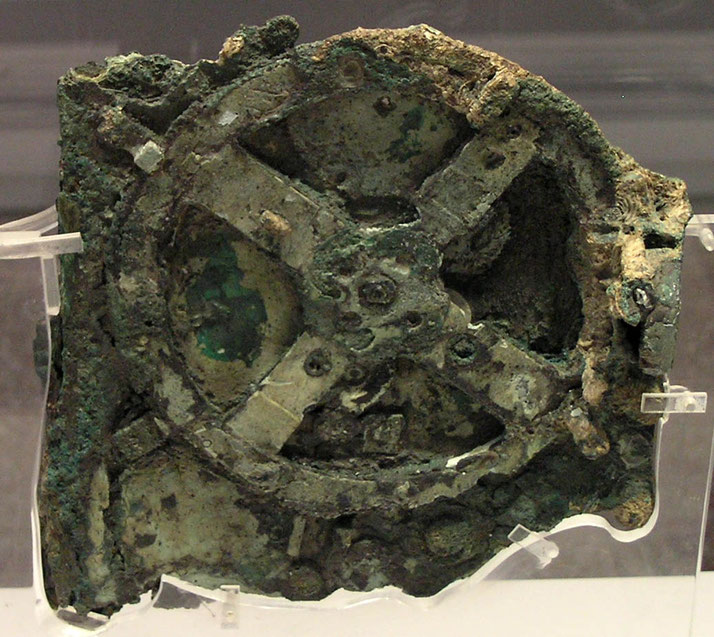The Antikythera Mechanism: the mysterious ancient machine that should not exist?

When divers stumbled upon it in a Roman shipwreck, what they thought was a lump of stone turned out to be a device that appears to be an ancient analog computer capable of predicting eclipses and planetary movements.
However, no other evidence of such advanced engineering exists from the same period. Why?
The discovery
The Antikythera mechanism is an ancient Greek astronomical device that sponge divers discovered in 1900 off the coast of Antikythera; they recovered various fragments of it the following year, in 1901.
This device has been called one of the most important archaeological finds of the 20th century.
What is the Antikythera mechanism?
This mechanism was an ancient Greek machine made up of gears and cogs. About 30 individual cogs survive in the fragments we have today, although reconstructions indicate the complete machine would have contained around 37 gears, with roughly seven missing or too damaged to see.
It was made from a single bronze sheet in the late 2nd century BC, and it is believed to have been made by a team of skilled workers and builders on the island of Rhodes.
It was originally kept in a wooden case and had a series of dials and pointers that could be adjusted to follow the positions of the sun, moon, and planets.
Greek inscriptions cover the device and show that its intented purpose was for detailed sky-watching.
When functional, the mechanism was powered by a hand-crank.

What does it do?
Specifically, the Antikythera mechanism could correctly predict the movements of objects in the sky in a way that was not possible with other tools of the time.
It followed the Metonic cycle of 19 years and the Saros cycle of 223 lunar months, both critical because they let observers know when eclipses would occur.
However, it used a special gear system, an innovation that did not appear again in Europe until the 14th century.
This breakthrough had a significant effect on our understanding of ancient Greek technology and astronomy, and it showed that Greeks were far more advanced than previously thought.
Who made it?
One of the biggest questions about the Antikythera mechanism is who its makers were.
Despite extensive research, its creator is still unknown, but scholars believe it was made on Rhodes, where Hipparchus, a well-known Greek astronomer, studied celestial events.
How did they develop the technology?
Given its complexity, another question about the Antikythera mechanism is how the ancient Greeks came up with such advanced technology.
The device is a very complex piece of machinery that was clearly ahead of its time.
Derek J. de Solla Price, a physicist and historian of science, was one of the first to study the Antikythera mechanism in the 1950s and he called it a 'computer' of the ancient world.
It is possible that the Greeks had access to knowledge and tools that have since been lost, or that they developed their advanced ideas through trial and error over many years.
Where was it going?
The Antikythera mechanism was found on a sunken ship, a situation that has led to questions about how it got there and whether it was meant for a particular person or was part of a bigger load.
In fact, the ship was carrying a range of luxury items to Rome. Other objects have been recovered from the wreck, including bronze statues, glassware, and ceramic pots.
According to these theories, the mechanism was on its way to a Roman patron.
The ongoing study of the mechanism
The Antikythera mechanism has also led new scientists and engineers to study ancient technology and building methods, prompting researchers from the Antikythera Mechanism Research Project to use modern imaging methods to study it in detail.
They have been able to create digital reconstructions that give new ideas about how it was made and how it worked.
Currently, the Antikythera mechanism is on display at the National Archaeological Museum in Athens.
What do you need help with?
Download ready-to-use digital learning resources
Copyright © History Skills 2014-2025.
Contact via email
With the exception of links to external sites, some historical sources and extracts from specific publications, all content on this website is copyrighted by History Skills. This content may not be copied, republished or redistributed without written permission from the website creator. Please use the Contact page to obtain relevant permission.





